Authors:
ABSTRACT
Aim
The authors evaluated radiation and skin doses absorbed by the eye lens, as well as the parotid and thyroid glands,
during a low dose maxillary spiral computed tomography (CT).
Methods
Three spiral CTs were carried out, one after the other,
changing from time to time MAS, pitch factor, Kv and consequently, CTDI/Vol, until the minimum values detectable by the equipment
were reached (MAS 28, Kv 80, CTDI/Vol 2.5, Pitch 1). The quality of the images was evaluated on the grounds of being able to visualise
the anatomic structures considered. The amount of radiation effectively absorbed by the soft tissue (skin doses) can be measured with
the help of dosimeters placed at the level of eye lens, parotid and thyroid glands. The spiral CTs were performed with a Siemens 16 CT
sensation machine, using a tissue equivalent Head-Neck RT Humanoid phantom.
Results
From the results of this study, it appears
possible to obtain high quality images, useful for diagnosing numerous skeletal pathologies in orthodontics, reducing of about
90 the radiation dose per unit of volume and, at the same time, reducing the soft tissue (skin) dose of about 85 when
compared to pre-established settings.
Conclusion
The authors conclude their research emphasizing the possibility of applying low
dose protocols, not only in orthodontics but in any dental field, whenever a spiral CT is needed for a more detailed diagnosis.
PLUMX METRICS
Publication date:
Keywords:
Issue:
Vol.7 – n.2/2006
Page:
Publisher:
Cite:
Harvard: G. Matarese, M. Portelli, M. Mazza, A. Militi, R. Nucera, E. Gatto, G. Cordasco (2006) "Evaluation of skin dose in a low dose spiral CT protocol", European Journal of Paediatric Dentistry, 7(2), pp77-80. doi:
Copyright (c) 2021 Ariesdue

This work is licensed under a Creative Commons Attribution-NonCommercial 4.0 International License.
